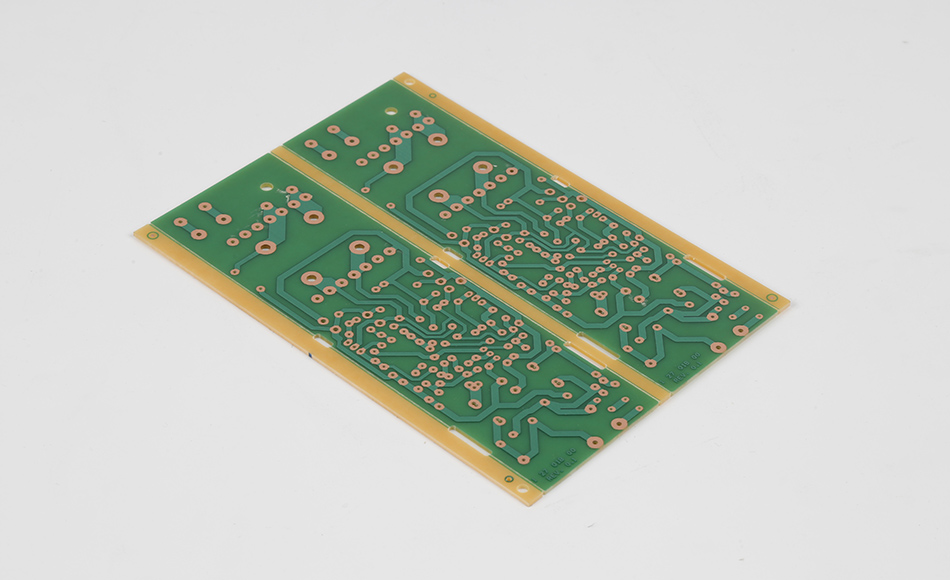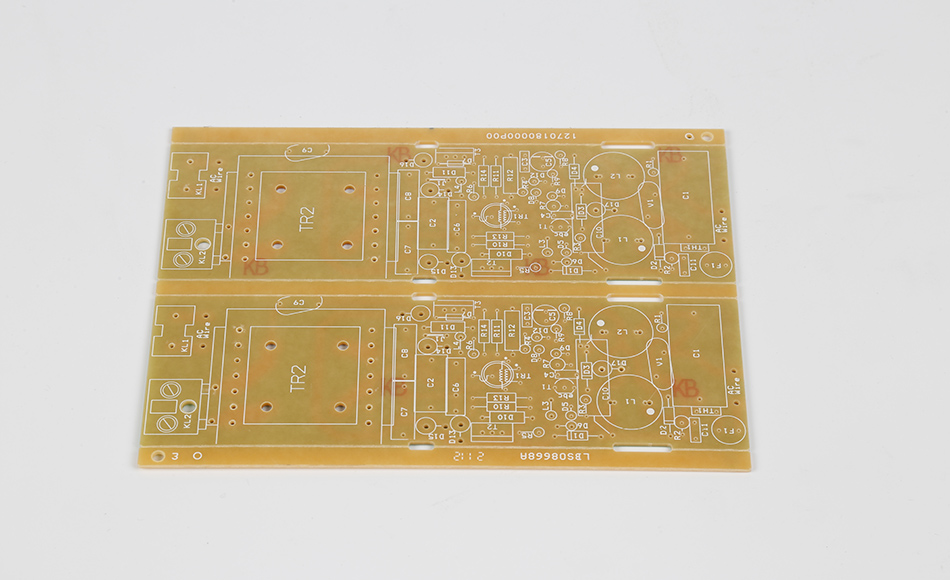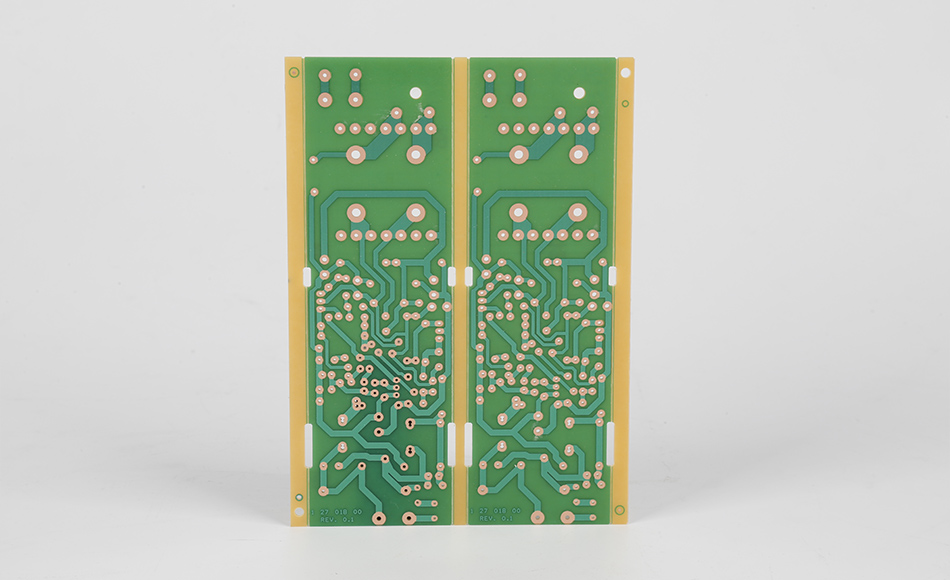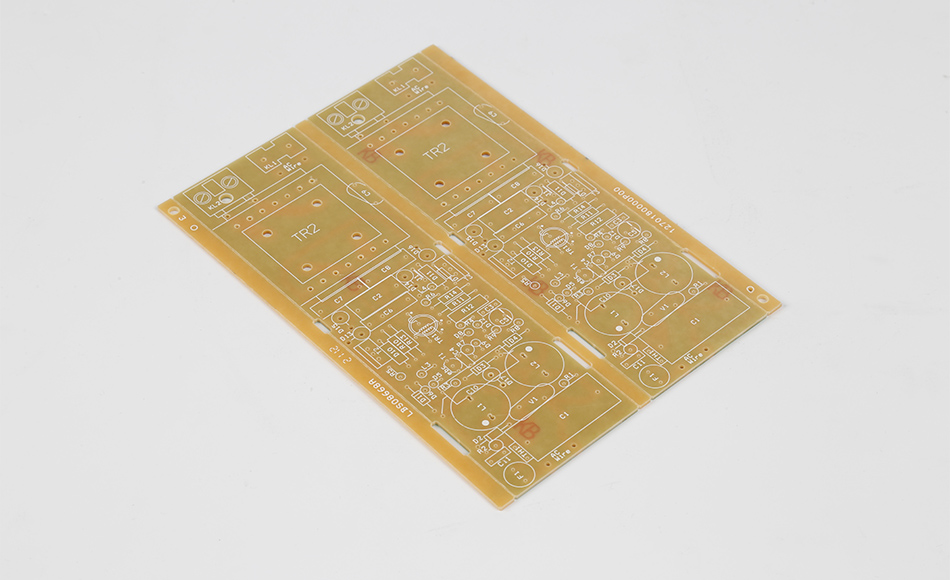-
- PCB TYPE
- PRINTED CIRCUIT BOARD PROTOTYPE ALUMINUM PRINTED CIRCUIT BOARD R&F PCB FPC HIGH FREQUENCY PCB HIGH-TG PCB HEAVY COPPER PCB HDI PCB PCB FOR LIGHTING METAL CORE PCB
time:Aug 25. 2025, 16:57:19
Choosing the right KB7150T CEM3 PCB Manufacturer is a critical decision for engineers and procurement teams working on electronics that demand consistent performance, durability, and compliance with strict industry standards. The KB7150T variant of CEM3 PCB is not a generic substrate—it is engineered for applications where mid-tier performance meets specialized requirements, such as enhanced mechanical resilience, stable electrical properties in variable environments, and compatibility with high-density component layouts. Unlike standard CEM3 PCBs, KB7150T is tailored to address gaps in reliability for sectors like industrial control, medical diagnostics, and consumer electronics where downtime or component failure carries significant costs.
A reputable KB7150T CEM3 PCB manufacturer does more than produce substrates: they combine deep material expertise (specific to KB7150T’s formulation), rigorous quality control (aligned with global standards like IPC and UL), and client-centric customization to ensure the PCB integrates seamlessly into end devices. This article explores the key attributes that define a trusted KB7150T CEM3 PCB manufacturer, including their production capabilities, quality assurance protocols, supply chain sustainability, and post-sales support. By focusing on the manufacturer’s role in delivering specialized value—rather than just the PCB’s material properties—it fills a gap in prior discussions that have centered on CEM3’s technical characteristics, while providing actionable insights for businesses seeking to source KB7150T PCBs reliably.
Before evaluating manufacturers, it is critical to understand the unique positioning of KB7150T CEM3 PCB: it balances the cost-effectiveness of standard CEM3 with targeted enhancements for reliability, making it ideal for applications that require more than basic performance but do not justify the premium of FR4 or ceramic substrates. Key differentiators of KB7150T include:
Enhanced Mechanical Toughness: KB7150T’s glass fiber reinforcement and epoxy resin formulation are optimized to resist cracking under vibration or physical stress—critical for portable industrial tools or medical devices handled frequently.
Stable Electrical Performance: Even in environments with fluctuating humidity (e.g., 30–85% RH), KB7150T maintains consistent dielectric properties, preventing signal drift in communication modules or sensor arrays.
Compliance with Specialized Standards: KB7150T is often certified for applications like medical electronics (ISO 13485) or automotive components (IATF 16949), requiring manufacturers to adhere to strict production controls.
These attributes mean KB7150T cannot be produced using generic CEM3 manufacturing processes. A competent manufacturer must have expertise in:
Sourcing KB7150T-specific raw materials (e.g., high-purity glass fibers, low-loss epoxy resins) to avoid performance inconsistencies.
Tuning lamination and curing parameters to unlock KB7150T’s mechanical and electrical advantages—generic CEM3 processes would fail to maximize its potential.
Validating each batch against KB7150T’s unique performance benchmarks (e.g., flexural strength under thermal cycling), rather than relying on standard CEM3 testing.
Without this specialized expertise, even a “KB7150T” labeled PCB may fail to meet the reliability requirements of critical applications—making manufacturer selection as important as the PCB itself.

A reliable KB7150T CEM3 PCB manufacturer distinguishes itself through four core competencies: specialized production capabilities, rigorous quality control, flexible customization, and transparent supply chain management. These competencies ensure consistency, compliance, and alignment with client needs.
KB7150T’s unique formulation requires production processes tailored to its material characteristics. Top manufacturers invest in:
a. Raw Material Sourcing and Validation
KB7150T’s performance starts with high-quality inputs. Leading manufacturers:
Partner directly with trusted suppliers of KB7150T-specific glass fibers (e.g., low-alkali E-glass) and epoxy resins (formulated for low moisture absorption).
Conduct incoming material testing (IMT) for every batch—including fiber density checks, resin viscosity measurements, and impurity screening—to ensure compliance with KB7150T’s specifications. For example, a manufacturer may use Fourier-transform infrared (FTIR) spectroscopy to verify resin chemistry, preventing off-spec materials from entering production.
b. Tuned Lamination and Curing Processes
KB7150T’s enhanced mechanical properties depend on precise lamination:
Controlled Pressure and Temperature: Unlike standard CEM3, KB7150T requires a stepped lamination cycle (e.g., 140°C for 60 minutes, followed by 170°C for 120 minutes) to ensure full resin impregnation of glass fibers and minimize voids. Manufacturers use computer-controlled presses with real-time temperature monitoring to maintain uniformity across large production runs.
Void Reduction: KB7150T’s reliability is compromised by even small voids (air pockets) in the substrate, which can cause delamination under stress. Leading manufacturers use vacuum-assisted lamination to remove trapped air, achieving void rates below 0.1%—a critical benchmark for medical and industrial applications.
c. Precision Machining for High-Density Layouts
KB7150T is often used in PCBs with fine-pitch components (e.g., 0.5mm pitch ICs) or complex via structures. Manufacturers with KB7150T expertise:
Use high-precision CNC drilling machines (with 5-axis capabilities) to create microvias and holes with tight tolerances (±0.02mm), ensuring compatibility with small components.
Implement plasma cleaning after drilling to remove resin smears and glass fiber debris—this step is especially important for KB7150T, as residual debris can cause signal loss in high-frequency applications.

KB7150T’s target applications (e.g., medical devices, industrial controllers) demand compliance with strict quality standards. A trusted manufacturer implements a multi-stage QC process:
a. In-Process Inspection (IPI)
QC begins during production, not just at the end:
Automated Optical Inspection (AOI): After copper etching, AOI systems scan every KB7150T PCB for defects like trace anomalies, undercutting, or solder mask misalignment. Advanced AOI tools use AI to detect subtle issues (e.g., 5μm-wide trace gaps) that human inspectors might miss.
Dimensional Verification: Coordinate Measuring Machines (CMMs) check critical features—such as hole placement and board thickness—against KB7150T’s design specifications. This ensures compatibility with modular connectors or custom enclosures.
b. Final Performance Testing
Before shipment, KB7150T PCBs undergo testing to validate their unique capabilities:
Mechanical Testing: Samples from each batch are subjected to flexural strength and impact resistance tests (per IPC-TM-650 standards) to confirm KB7150T’s toughness. For example, a manufacturer may test flexural strength at 120°C to simulate industrial operating conditions.
Electrical Testing: Dielectric strength and insulation resistance tests ensure KB7150T maintains electrical stability in humid or high-voltage environments. For medical applications, manufacturers may also conduct leakage current testing to comply with IEC 60601.
Environmental Stress Testing: Accelerated aging tests (e.g., 1,000 hours at 85°C/85% RH) simulate long-term use, verifying that KB7150T does not delaminate or degrade over time.
c. Compliance Certification
Reputable manufacturers obtain third-party certifications for KB7150T, including:
UL 94 V-0: For flammability, critical for consumer and industrial electronics.
IPC-A-600: For PCB acceptability, ensuring consistency with global electronics manufacturing standards.
Industry-Specific Certifications: ISO 13485 (medical), IATF 16949 (automotive), or ISO 9001 (general quality) to meet client sector requirements.

No two KB7150T applications are identical—an industrial sensor PCB requires different features than a medical diagnostic device PCB. Top manufacturers offer customization options tailored to KB7150T’s strengths:
a. Layer and Copper Cladding Customization
Layer Configurations: KB7150T is available in 1–8 layer designs, with manufacturers adjusting layer counts to support client circuit complexity (e.g., 4-layer KB7150T PCBs for industrial controllers with separate power and signal layers).
Copper Thickness: From 1oz to 3oz, copper cladding is customized to handle client power requirements—thicker copper (3oz) for high-current industrial modules, thinner copper (1oz) for low-power medical sensors.
b. Surface Finish Options
KB7150T’s surface finish impacts solderability, corrosion resistance, and lifespan. Manufacturers offer finishes aligned with application needs:
Electroless Nickel Immersion Gold (ENIG): For medical devices or connectors requiring long-term corrosion resistance and flat contact surfaces.
Immersion Tin: For cost-sensitive industrial applications where solderability is critical but long-term exposure to harsh environments is not.
Organic Solderability Preservative (OSP): For lead-free assembly in consumer electronics, ensuring compliance with RoHS.
c. Specialized Coatings
For applications in harsh environments (e.g., dusty factories, humid medical labs), manufacturers apply conformal coatings to KB7150T PCBs:
Acrylic Coatings: For general moisture and dust protection in consumer electronics.
Silicone Coatings: For industrial PCBs requiring flexibility and resistance to extreme temperatures (-40°C to 200°C).

In today’s electronics industry, sustainability and supply chain transparency are as important as quality. Leading KB7150T CEM3 PCB manufacturers prioritize:
a. Sustainable Raw Material Sourcing
Recycled Content: Where possible, manufacturers use recycled glass fibers or bio-based epoxy resins in KB7150T production, reducing reliance on virgin materials. For example, some manufacturers incorporate 20–30% recycled glass fibers without compromising KB7150T’s performance.
Ethical Sourcing: Suppliers are audited for compliance with labor standards (e.g., SMETA) and environmental regulations (e.g., REACH), ensuring raw materials are sourced responsibly.
b. Waste Reduction in Production
Lean Manufacturing: Manufacturers use lean principles (e.g., 5S, Kanban) to minimize waste—for example, optimizing panel layouts to reduce KB7150T material scrap to below 5%.
Recycling Programs: Scrap KB7150T PCBs are processed to recover copper (95%+ recovery rate) and glass fibers, which are repurposed in non-electronic applications (e.g., construction materials).
c. On-Time Delivery and Supply Chain Resilience
KB7150T clients often operate on tight production schedules. Reliable manufacturers:
Maintain safety stocks of KB7150T raw materials to avoid delays from supplier shortages.
Use global logistics partners with track-and-trace capabilities, providing clients with real-time updates on shipment status.
Offer flexible lead times—from 7–10 days for prototypes to 4–6 weeks for high-volume production—to align with client project timelines.

A trusted KB7150T CEM3 PCB manufacturer understands the unique requirements of each application and tailors their approach accordingly. Below are the top sectors using KB7150T and how manufacturers support their needs:
Application Needs: Industrial controllers (e.g., PLCs, motor drives) require KB7150T’s mechanical toughness to withstand factory vibration and temperature swings (0°C to 100°C).
Manufacturer Support: Custom 4–6 layer KB7150T PCBs with thick copper cladding (2–3oz) for power distribution, conformal silicone coatings for dust protection, and IATF 16949 certification for automotive-adjacent industrial applications.
Application Needs: Devices like blood glucose monitors or urine analyzers demand KB7150T’s electrical stability (to avoid measurement errors) and compliance with ISO 13485.
Manufacturer Support: ENIG surface finishes for corrosion resistance, leakage current testing to meet IEC 60601, and batch traceability (from raw materials to shipment) for regulatory audits.
Application Needs: Smart home devices (e.g., thermostats, security cameras) use KB7150T for its cost-effectiveness and compatibility with high-density components.
Manufacturer Support: OSP surface finishes for RoHS compliance, thin-core KB7150T (0.8mm) for compact designs, and high-volume production capabilities (100k+ units/month) to meet consumer demand.
Application Needs: Field-test tools (e.g., voltage meters, environmental sensors) require KB7150T’s durability to withstand drops and outdoor use.
Manufacturer Support: Impact-resistant designs (thicker board edges), immersion tin finishes for reliable solder joints, and rapid prototyping (24–48 hours) to accelerate product development.
When selecting a KB7150T CEM3 PCB manufacturer, businesses should assess the following criteria to ensure alignment with their needs:
Do they have a dedicated team or process for KB7150T production (not just generic CEM3)?
Can they provide case studies or references from clients using KB7150T in similar applications?
What certifications do they hold for KB7150T (e.g., UL 94 V-0, ISO 13485)?
Can they share their QC process—including in-process inspection and final performance testing protocols?
Do they offer the layer counts, copper thicknesses, and surface finishes your application requires?
Can they accommodate special requests (e.g., conformal coatings, custom panel sizes)?
Do they have transparent sourcing practices for KB7150T raw materials?
What is their on-time delivery rate, and how do they handle supply chain disruptions?
Post-Sales Support:
Do they offer technical assistance (e.g., design for manufacturability, DfM) to optimize your KB7150T PCB design?
What is their return or rework policy if a batch fails to meet specifications?
To stay competitive, leading KB7150T CEM3 PCB manufacturers are investing in innovations that enhance their offerings while retaining KB7150T’s core advantages:
AI-Powered QC: Manufacturers are using machine learning algorithms to analyze AOI and X-ray data, improving defect detection accuracy for KB7150T by 15–20% and reducing false positives.
Digital Twins: Virtual replicas of KB7150T production lines allow manufacturers to simulate process changes (e.g., adjusting curing time) before implementing them, minimizing risk and optimizing efficiency.
Carbon-Neutral Production: Some manufacturers are offsetting remaining emissions from KB7150T production (e.g., via renewable energy credits) to offer carbon-neutral PCBs—appealing to clients with net-zero goals.
Bio-Based Resins: R&D into epoxy resins derived from plant oils (e.g., castor oil) for KB7150T is ongoing, with early prototypes showing comparable performance to petroleum-based resins while reducing carbon footprints by 25%.
IoT and Edge Computing: Manufacturers are optimizing KB7150T for low-power IoT devices by reducing board thickness (to 0.6mm) and integrating features like embedded antennas, supporting compact edge computing modules.
5G Small Cells: KB7150T’s stable dielectric properties at 2–6 GHz make it suitable for 5G small cells. Manufacturers are developing 6–8 layer KB7150T PCBs with controlled impedance to support high-frequency signal transmission.
A reliable KB7150T CEM3 PCB Manufacturer is more than a supplier—they are a partner in delivering high-reliability electronics. By focusing on specialized production processes, rigorous quality control, flexible customization, and sustainable supply chain management, these manufacturers ensure KB7150T PCBs meet the unique demands of industrial, medical, and consumer applications. For businesses, selecting the right manufacturer means avoiding costly downtime, ensuring regulatory compliance, and unlocking KB7150T’s full potential as a cost-effective, high-performance substrate.
As electronics continue to evolve—becoming smaller, more connected, and more reliant on consistent performance—KB7150T CEM3 PCB manufacturers will play an increasingly critical role. Their ability to innovate (e.g., smart manufacturing, sustainable materials) while maintaining expertise in KB7150T’s core properties will define their success—and the success of the clients who rely on them. For engineers and procurement teams, the key takeaway is clear: when sourcing KB7150T, prioritize manufacturers who combine technical depth, quality rigor, and client focus—these are the attributes that drive long-term success in today’s competitive electronics landscape.

Got project ready to assembly? Contact us: info@apollopcb.com



We're not around but we still want to hear from you! Leave us a note:

Leave Message to APOLLOPCB
